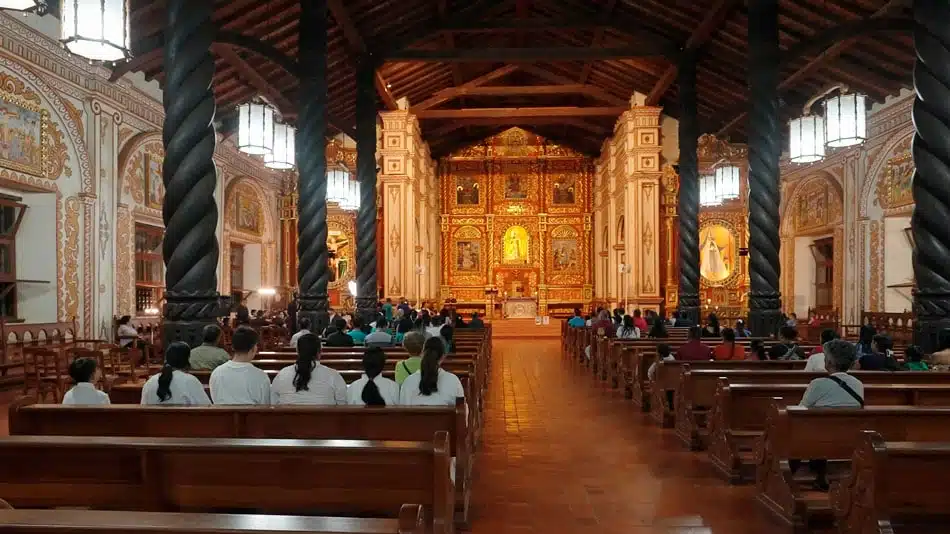The university has financed the installation of a new electrical and public address system in the temple, recognised as a World Heritage Site. The initiative is part of UNIR’s social responsibility projects in favour of the conservation of Bolivia’s cultural heritage.
The International University of La Rioja (UNIR), together with the Parentes Foundation, has sponsored the installation of a new electrical network, as well as a new public address system, for the Cathedral of Concepción, declared by UNESCO as a World Heritage Site.
The completed project corresponds to the educational institution’s social responsibility commitment to Bolivia to conserve the country’s cultural heritage, thanks to which the emblematic temple, a jewel of the colonial past, has recovered its splendour of light and sound for the benefit of the local church, its parishioners and all those who visit it.
To celebrate this initiative, a programme of events was held last weekend, including a sung mass on Saturday, a solemn mass on Sunday, and on the same day, an official handover ceremony with the participation of ecclesiastical, political and cultural authorities.

Monsignor Antonio Reimann, bishop of the Apostolic Vicariate of Ñuflo de Chávez, blesses the new facilities.
Luis Iriarte, UNIR’s representative in Bolivia, led the protocol ceremony to hand over the work to Father Adalid Ordoñez, parish priest of the cathedral, and to Monsignor Antonio Reimann Panic, bishop of the Apostolic Vicariate of Ñuflo de Chávez, who declared that “with this new installation we will be able to sleep more peacefully. The previous system had shortcomings, it was not adequate to the new safety requirements, and in a wooden building like this one there is a very high risk of fire. With the resources we have in the town, we would not have been able to deal with it.
For his part, Iriarte was proud of the work carried out by the institution he represents: “The International University of La Rioja and the Parentes Foundation are making a notable commitment to the improvement and conservation of Bolivia’s cultural heritage. They are currently financing corporate social responsibility projects in various parts of the country, of which this one in Concepción is one of the most important. It is part of UNIR’s identity to facilitate access to culture and quality education from all places and for all people,” he said.
A project of great value
The new facilities in the religious building were developed in four phases under the direction of architect Guido Bravo, with an investment of more than 100,000 dollars.
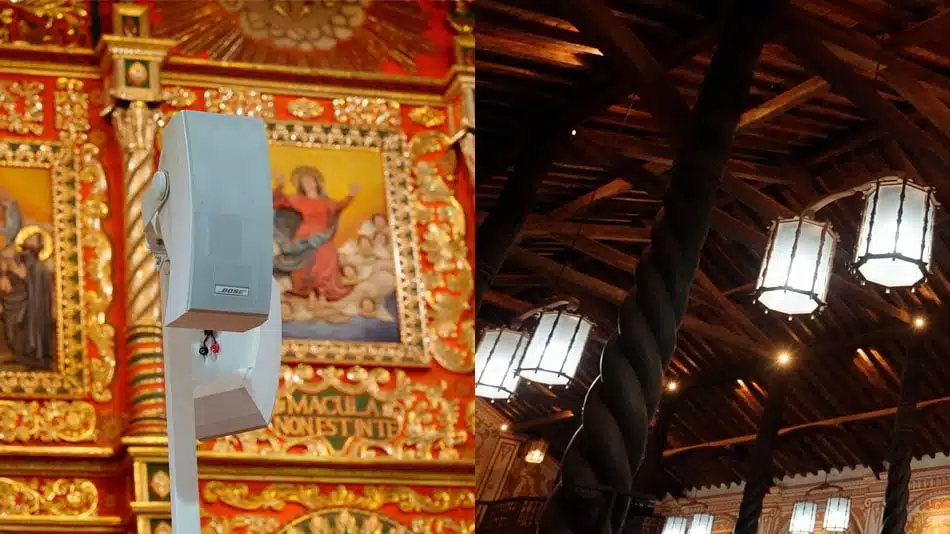
Samples of the new public address and lighting installations in the basilica.
An essential part of the electrification work was to provide all the safety measures for the cathedral, including a fire prevention system. It is no coincidence that this mid-18th century building, which is the imprint of the Jesuit reductions in Bolivia, has wood as an essential element, both in the sturdy columns and beams and in the artistic works of art inside.
Of incalculable value are the altar of the Virgin, covered in gold leaf and housing the images of the Dolorosa and San Juan, or the Immaculate Conception, which is carried in procession during the patron saint’s festivities in December. Now, these carvings and the basilica as a whole, with its three naves more than 60 metres deep and 30 metres high, are more secure and enhanced thanks to a modern lighting system.
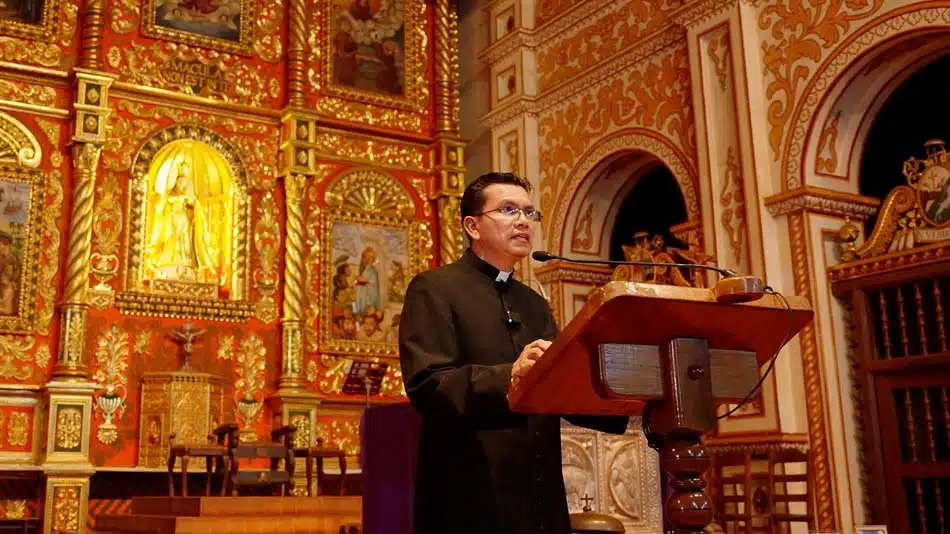
Adalid Ordoñez, parish priest of the cathedral, in the pulpit.
“In the execution of this project, we have always prioritised the utmost respect for the original construction. There are no wires in sight and we have tried to make the technical elements go unnoticed. It has been a work of attention to detail”, says Guido Bravo, highlighting the importance of giving “new light” to such a great heritage.
The incorporation of a new public address system has also been felt in the cathedral. The first test to prove it took place last Saturday, when the parishioners were able to participate in the celebration of a mass sung by the children of the Concepción choir.
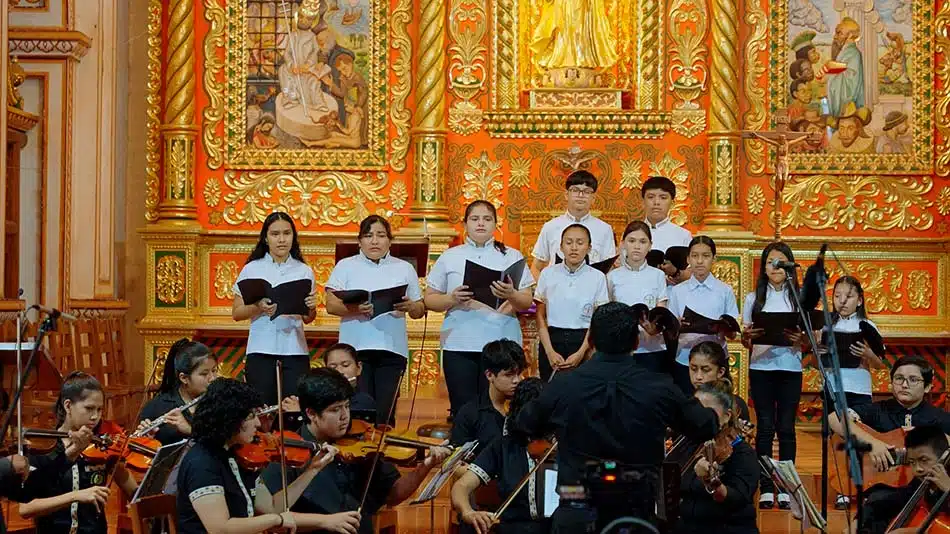
A sung mass was held as part of the programme.
The parish priest Adalid Ordoñez highlighted the change that has taken place for the good of the community: “With the previous public address system only a third of the space was covered. The parishioners complained that they came to mass and could not hear either the sermon or the Word of God”.
Educational and social responsibility work
UNIR’s commitment in Bolivia is manifested through its 100% online academic activity, with more than 66,000 students in more than 90 countries; and in the promotion of social and cultural development projects in the country.
As an institution of Higher Education, one of UNIR’s aims is to contribute to the progress of society through the creation and transmission of knowledge and the promotion of culture, training people with a comprehensive education and providing the territorial environment with resources and tools that favour social transformation and development.
In Bolivia it already has more than 150 students who can access more than 200 official qualifications recognised by national universities, under a pedagogical model of European quality, innovative and practical, which seeks continuous improvement focused on employability and excellence.
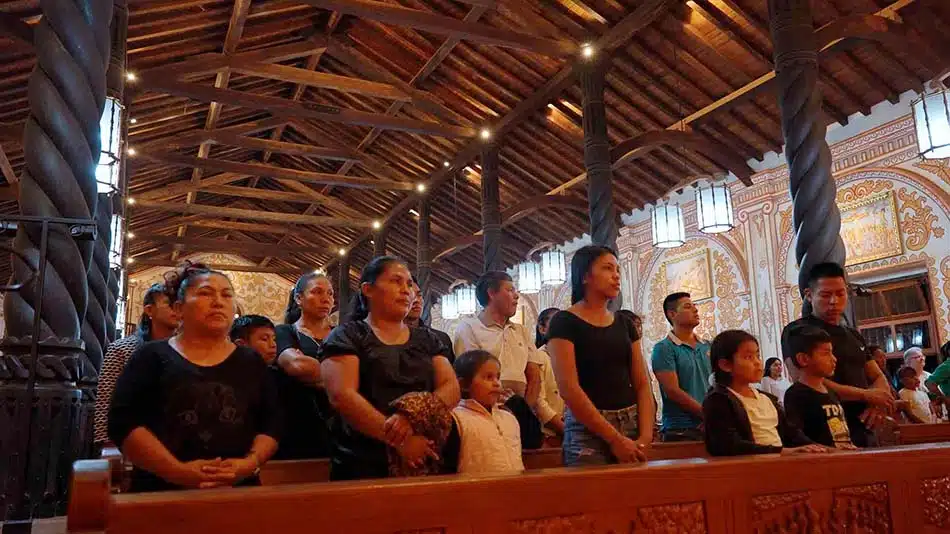
The faithful are the main beneficiaries of the new lighting and the new public address system.
Similarly, UNIR’s commitment extends to promoting social and cultural development projects in the country. Examples include the restoration of four canvases by the 16th century painter Bernardo Bitti, in collaboration with the Archbishopric of Chuquisaca; and the celebration of the ‘Tenebrarium’ concert in Sucre and Potosí in 2023, after recovering valuable baroque scores that have never been performed before.
More recently, UNIR has promoted the rehabilitation of the pilgrims’ hostel of the Basilica of Copacabana, in January this year, again together with the Fundación Parentes of the educational group PROEDUCA, to which the university also belongs. As has been done with the Cathedral of Concepción, both institutions will hold, in the aforementioned city on the shores of Lake Titicaca, a ceremony to hand over the work at the end of February.
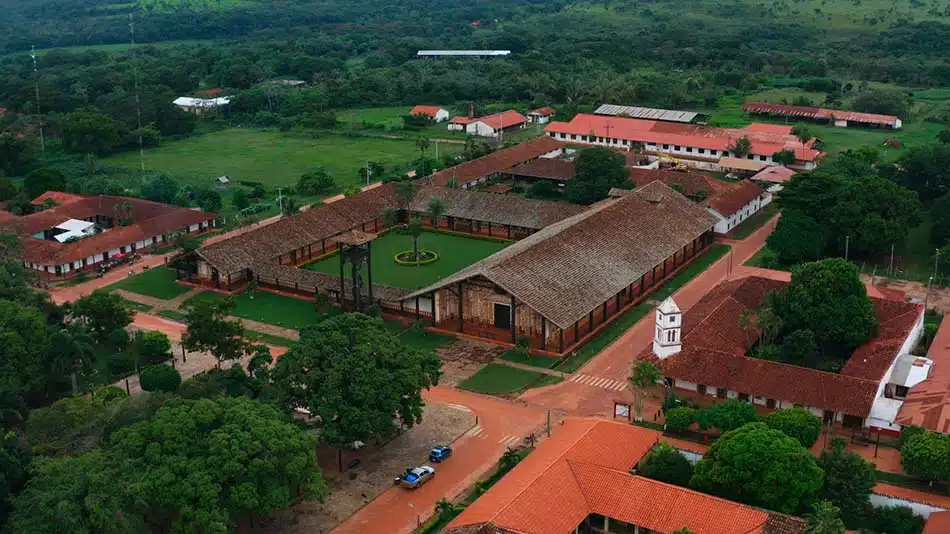
Panoramic view of the cathedral of Concepción, in the middle of the Bolivian Amazon.
